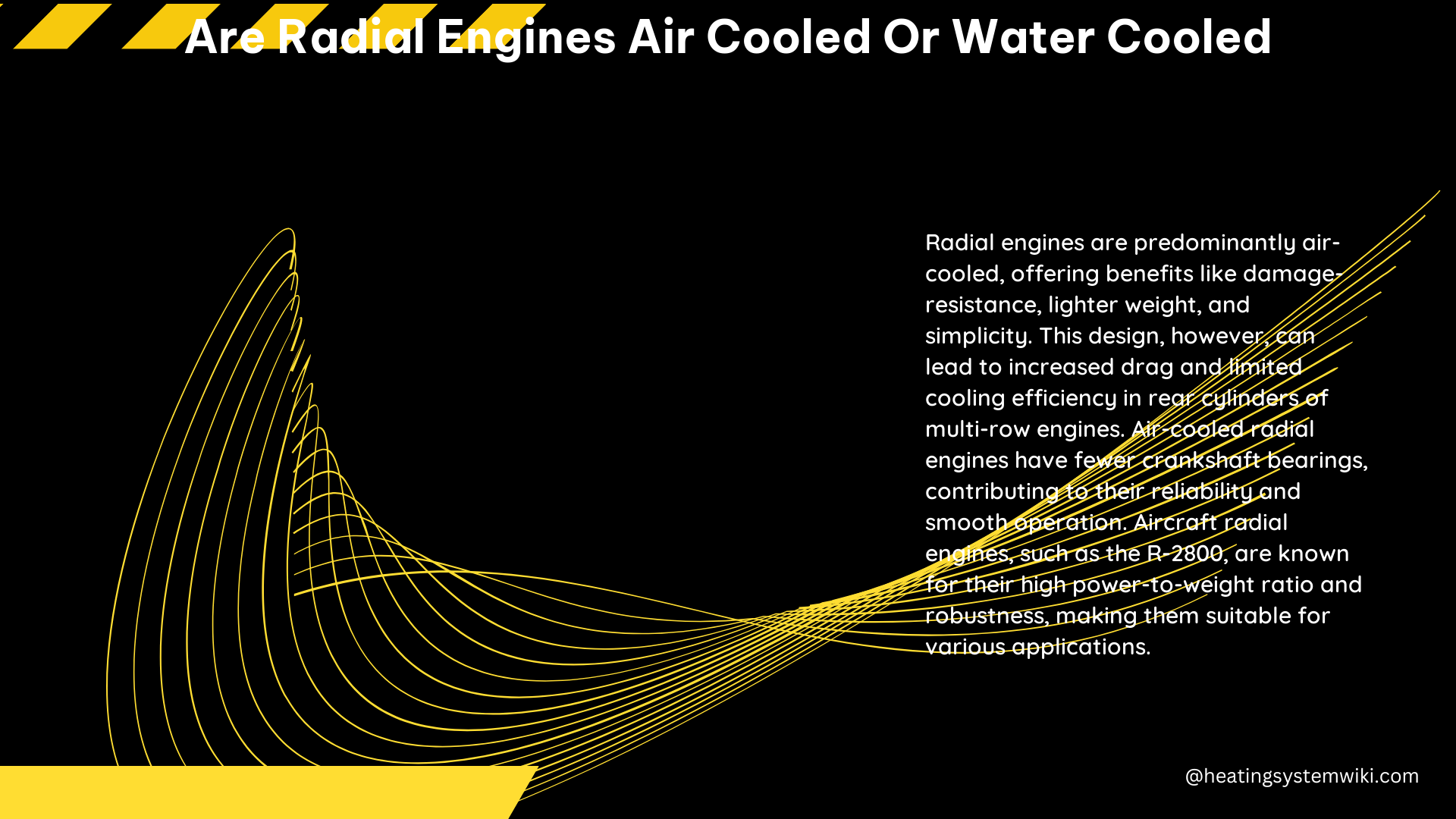Radial engines are primarily air-cooled, with the cylinders exposed to the airflow. This design allows for efficient cooling, as the air passes between the cylinders, reducing the risk of overheating. However, the exposed cylinders also increase drag, which can limit pilot visibility and aircraft performance. To mitigate this issue, specially designed cowlings with baffles are used to force the air between the cylinders, reducing drag and improving cooling.
Advantages of Air-Cooled Radial Engines
Radial engines are predominantly air-cooled, offering several advantages over water-cooled engines:
- Simplicity: Air-cooled radial engines have a simpler design with fewer components, making them easier to maintain and repair.
- Reliability: The lack of a complex water-cooling system reduces the risk of leaks, freezing, or overheating, improving the engine’s reliability.
- Weight Savings: Air-cooled engines do not require the additional weight of a water-cooling system, including the radiator, water pump, and associated plumbing.
- Robustness: Radial engines have shorter and stiffer crankshafts, requiring fewer bearings. This design contributes to their robustness and resistance to damage, as they are less prone to vibration and can maintain higher maximum RPMs, generating more power.
- Versatility: Air-cooled radial engines can operate in a wider range of environmental conditions, including high-altitude and extreme temperatures, without the risk of cooling system failure.
Disadvantages of Air-Cooled Radial Engines

Despite the advantages, air-cooled radial engines also have some drawbacks:
- Drag: The exposed cylinders of a radial engine increase drag, which can limit aircraft performance and pilot visibility.
- Cooling Challenges: Ensuring adequate cooling for all cylinders can be more challenging, as the airflow must be carefully managed to prevent hot spots and uneven cooling.
- Noise: Air-cooled radial engines tend to be louder than their water-cooled counterparts, which can be a concern for both the pilot and ground crew.
Water-Cooled Radial Engines
Although most radial engines are air-cooled, there have been instances of water-cooled radial engines, such as the Salmson 9Z series of nine-cylinder water-cooled radial engines used in World War I combat aircraft. These engines, however, are less common due to the advantages of air-cooling in most applications.
The key advantages of water-cooled radial engines include:
- Reduced Drag: The use of a cowling to enclose the cylinders can reduce the overall drag of the engine, improving aircraft performance.
- Improved Cooling: Water-cooling can provide more consistent and efficient cooling, especially for high-power applications or in hot environments.
- Quieter Operation: Water-cooled engines tend to be quieter than their air-cooled counterparts.
However, the drawbacks of water-cooled radial engines include:
- Increased Complexity: The addition of a water-cooling system, including a radiator, water pump, and associated plumbing, increases the complexity of the engine design and maintenance.
- Weight Penalty: The water-cooling system adds significant weight to the engine, which can negatively impact aircraft performance and payload capacity.
- Vulnerability to Leaks: Water-cooled engines are more susceptible to cooling system failures, such as leaks, which can lead to engine overheating and potential damage.
Technical Specifications of the Pratt & Whitney R-2800 Radial Engine
The Pratt & Whitney R-2800 is a common example of an air-cooled radial engine, with the following technical specifications:
| Specification | Value |
|---|---|
| Type | Air-cooled radial engine |
| Cylinders | 18 (nineteen in some versions) |
| Bore | 5.75 in (146 mm) |
| Stroke | 6.00 in (152 mm) |
| Displacement | 2,804 cu in (46 L) |
| Power Output | 2,000 hp (1,500 kW) at 2,700 rpm for takeoff |
| Compression Ratio | 6.7:1 to 7.5:1 |
| Dry Weight | 2,300 lb (1,043 kg) |
The R-2800 engine was widely used in various World War II-era aircraft, such as the Grumman F4F Wildcat, Vought F4U Corsair, and Douglas SBD Dauntless dive bomber, due to its combination of power, reliability, and relatively simple air-cooled design.
Conclusion
In summary, radial engines are predominantly air-cooled, offering several advantages over water-cooled engines, including simplicity, reliability, weight savings, robustness, and versatility. However, the exposed cylinders can increase drag, which must be managed through the use of specially designed cowlings and baffles.
While water-cooled radial engines have been used in the past, they are less common due to the inherent advantages of air-cooling in most applications. The choice between air-cooled and water-cooled radial engines often depends on the specific requirements of the aircraft and the operating environment.
